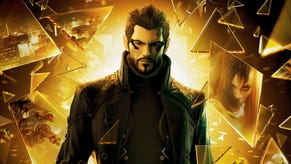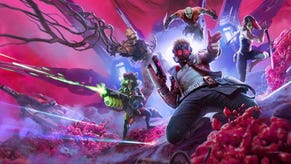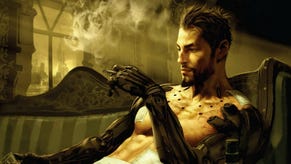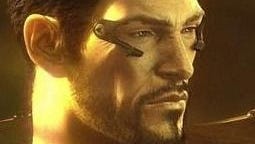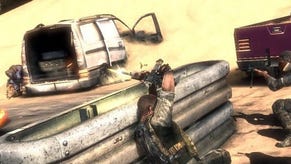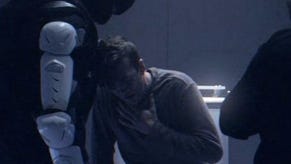Eurogamer Expo Sessions: Eidos Montreal presents Deus Ex
Cyber renaissance and angular faces.
Today, Eidos Montreal art director Jonathan Jacques-Belletete takes to the stage in Eurogamer's huge auditorium to talk about Deus Ex: Human Revolution, the action role-playing game due out early next year. This is hugely exciting for us, and for (most) of the series' many fans.
Because we know not everyone can be at the Eurogamer Expo, we chatted with Jonathan on the phone to get the low-down on his developer session, dug up the inspiration behind the game's unique art style, and discovered why main man Adam Jensen's face is "angular".
Jonathan Jacques-Belletete: I would describe it as a graphic novel approach in terms of the visual texture. We wanted to have something extremely credible but not photorealistic. We see the game world as one complete entity. It's very opaque. It's very homogonous. Everything seems to fit within the same digital language. That was very important to us.
Some games do some very good photorealistic characters, but then you place them next to some of the objects and environments in the game and you have different degrees of realism. To me it breaks the suspension of disbelief and the credibility of the world. So we decided to dial down the photorealism, but have this even rendering of everything in the game.
The game is over designed. Every single prop has been concept-arted with the same style. Everything had to be made just like that in the game. The assets had to be created exactly like they are in concept art. It's definitely got flavour and soul.
It's cyberpunk, obviously. There was no way around that. It's something we're glad to work with. But we wanted to have our own flavour to the cyberpunk approach at the same time. That's when the whole Renaissance thing came in. Based on that, it's something, hopefully, original – a new twist to cyberpunk visual archetypes.
My job is pretty much done. The art direction has been sealed since the beginning of the summer. Everybody knows exactly what they have to do. Now we're fine-tuning a whole bunch of little things here and there, making sure they're as pretty as they can be with the time we have left.
But in terms of creating new stuff or imagining new things, that's all done. It's just a matter of finishing up everything as good as we can. We're almost there.
Really good. We're always expecting answers from two different types of people. Obviously there's the industry and the public as a whole, like people that might never have even heard about Deus Ex before. We want those people to be attracted to the game and think it's good-looking.
There are also the people who are well aware of what Deus Ex is and what it stands for. It's almost like a double standard thing, that we're trying to please both those people. It's been overwhelming how the team has succeeded at doing that. It's been well received from the people who are just looking at it from the standpoint of, is it a good game or not? And well received from the standpoint of the people who have a checklist of whether it's Deus Ex or not.
I talk about the process of creating the vision for Deus Ex. The Renaissance connection with cyberpunk - how we ended up mixing it with it and the reasons why we decided that, and how hard it is when it's a totally unthreaded path - what it means to be the first ones to be there.
I have extremely talented concept artists – some of the best in the industry. Even people that talented, when you tell them for the first time to mix such weird variables, like take some of the Renaissance stuff and mix it with cyberpunk – even for people that are that talented, it was something quite tricky to do. It's come out very good but it was hard to get there. I talk about those challenges and how we succeeded.


